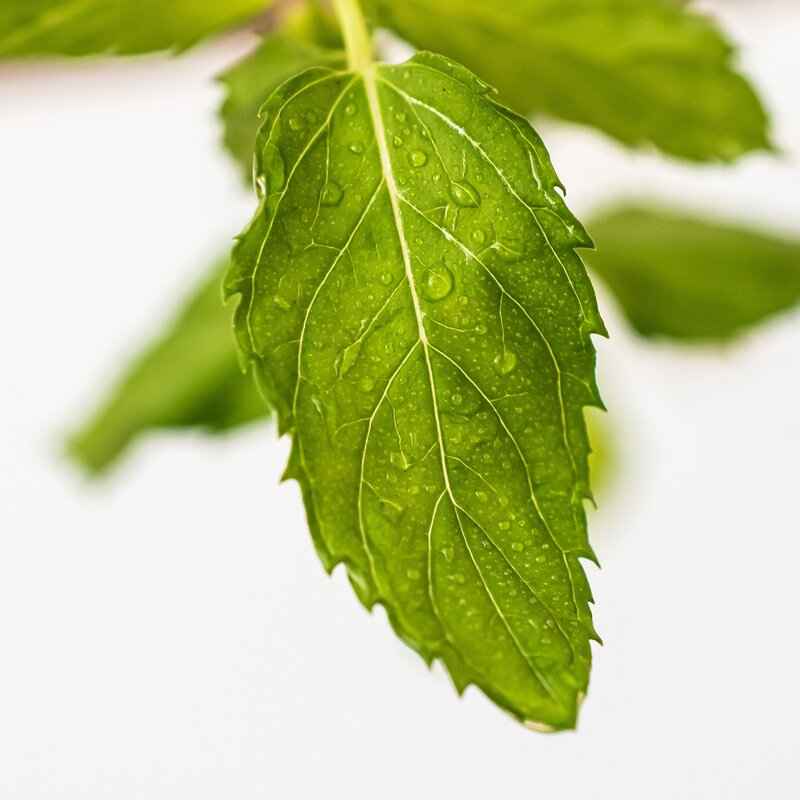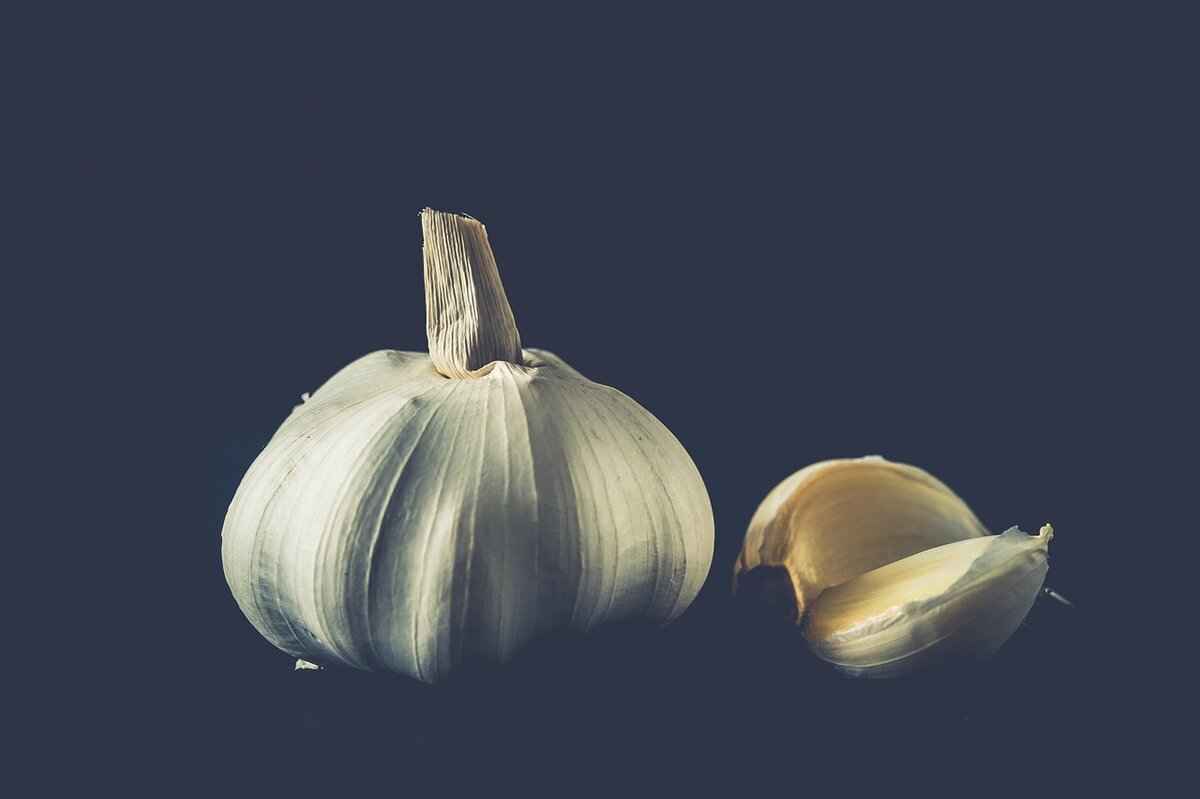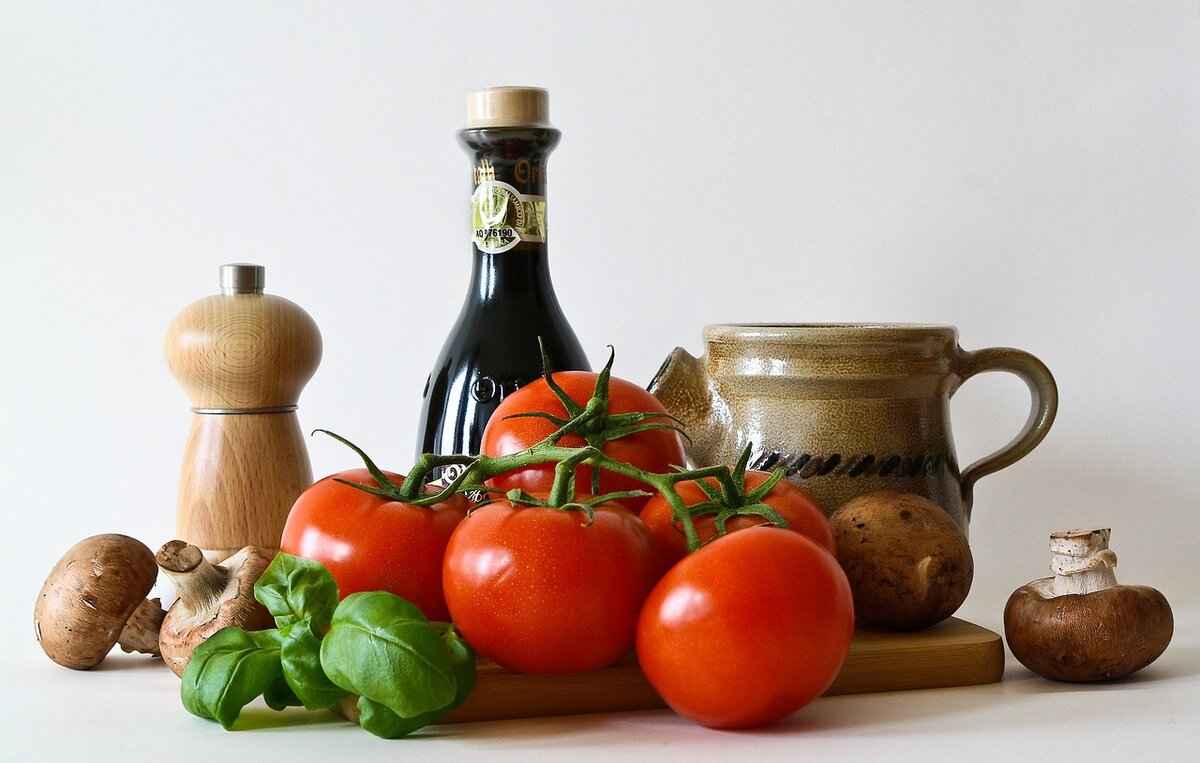Fresh herbs and greens are not just ingredients; they are the essence of Asian cuisine. Their vibrant flavors and aromas play a crucial role in enhancing dishes, making them a vital component of culinary traditions across Asia. From the bustling streets of Bangkok to the serene markets of Tokyo, fresh herbs and greens bring life to meals, offering a delightful experience for the senses.
In Asian cooking, fresh herbs are considered indispensable. They provide unique flavors that can transform a simple dish into an extraordinary one. Each region utilizes its own selection of herbs, contributing to the diverse culinary landscape. For instance, Vietnamese cuisine often highlights the use of cilantro and mint, while Thai cuisine features Thai basil and lemongrass. This diversity not only enriches the dishes but also reflects the cultural significance of herbs in each region.
- Cilantro: Known for its bright, citrusy flavor, cilantro is a staple in many Asian dishes.
- Thai Basil: With its unique anise-like taste, it is essential in curries and stir-fries.
- Mint: Adds a refreshing touch to salads and soups.
- Lemongrass: Provides a zesty flavor, commonly used in soups and marinades.
Greens like bok choy, spinach, and watercress are not only flavorful but also packed with essential nutrients. Incorporating these greens into your meals can significantly enhance their nutritional profile. For example, bok choy is loaded with vitamins A, C, and K, and it is a great source of calcium and iron.
Bok choy is a powerhouse of nutrition. Its high vitamin content supports immune health, while its calcium and iron content is essential for bone strength and energy production. Including bok choy in stir-fries or soups not only boosts flavor but also contributes to a balanced diet.
Spinach is incredibly versatile. It can be used in salads, soups, and stir-fries, making it a fantastic addition to any meal. Its mild flavor allows it to blend seamlessly with stronger ingredients, and it provides a wealth of nutrients, including iron and folate.
To maximize the flavors and health benefits of fresh herbs and greens, proper usage is key. Techniques such as chopping, bruising, or infusing can enhance their potency. For instance, chopping herbs releases essential oils, intensifying their flavor. It’s also important to consider when to add herbs during cooking; adding them at the beginning can create a more subtle flavor, while incorporating them at the end preserves their freshness.
Proper storage is essential for maintaining the freshness and flavor of herbs and greens. Here are a few effective methods:
- Refrigeration: Store herbs upright in a glass of water, like a bouquet, and cover them loosely with a plastic bag.
- Wrapping: Wrap greens in damp paper towels to keep them hydrated and fresh.
- Freezing: For long-term storage, consider freezing herbs in ice cube trays with water or oil.
By understanding the significance of fresh herbs and greens in Asian cooking, you can elevate your culinary skills and enjoy the myriad of flavors and health benefits they offer.

Why Are Fresh Herbs Essential in Asian Cuisine?
Fresh herbs are not just ingredients; they are the very essence of Asian cuisine, creating a symphony of flavors and aromas that transform ordinary dishes into extraordinary culinary experiences. Their vibrant presence in cooking reflects the rich cultural tapestry of Asia, where each region boasts its own unique herbs that contribute to its culinary identity. From the bustling streets of Bangkok to the tranquil markets of Hanoi, these herbs play a crucial role in defining the taste and character of dishes.
Fresh herbs are a cornerstone of Asian cooking, providing unique flavors and aromas that elevate dishes. Their use varies across regions, contributing to the distinct culinary identities of each culture. For instance, in Thai cuisine, Thai basil brings a spicy, anise-like flavor that is essential in many dishes, while cilantro offers a fresh, citrusy note that complements the heat of chilies. In Vietnamese cooking, herbs like mint and perilla are often used in fresh spring rolls, adding a burst of freshness that balances the savory elements.
Moreover, herbs are not only for flavor; they also serve as a means of enhancing the nutritional profile of meals. For example, parsley and coriander are rich in vitamins and minerals, making them a healthy addition to any dish. The incorporation of these fresh ingredients can significantly boost the overall health benefits of a meal, aligning with the growing trend towards healthier eating.
What Are the Most Popular Herbs Used in Asian Dishes?
- Cilantro: Widely used in Thai and Vietnamese cuisines, cilantro adds a refreshing kick to dishes.
- Thai Basil: This herb is a staple in Thai cooking, known for its unique flavor profile that differs from sweet basil.
- Mint: Often used in salads and as a garnish, mint adds a refreshing note to various dishes.
- Lemongrass: Common in Southeast Asian cooking, lemongrass imparts a citrusy flavor that brightens up soups and curries.
How Do Greens Contribute to Nutritional Value?
Greens play a significant role in Asian cuisine, offering vital nutrients and enhancing the health benefits of meals. For example, bok choy is a popular green that is rich in vitamins A, C, and K, as well as calcium and iron. Incorporating such greens into stir-fries and soups not only adds flavor but also boosts the nutritional content of the dish.
What Are the Health Benefits of Bok Choy?
Bok choy is particularly beneficial for its high antioxidant content, which can help combat oxidative stress in the body. Additionally, its low-calorie count makes it an excellent choice for those looking to maintain a healthy weight while enjoying flavorful meals.
How Can Spinach Be Used in Various Dishes?
Spinach is another versatile green that can be used in salads, soups, and stir-fries. Its mild flavor complements stronger ingredients, allowing it to blend seamlessly into various dishes while providing essential nutrients such as iron and folate.
How to Use Fresh Herbs and Greens Effectively?
To maximize the flavor and health benefits of herbs and greens, proper usage is essential. Techniques such as chopping, bruising, or infusing can enhance their flavors in cooking. For instance, chopping herbs releases essential oils, intensifying their flavor, while adding them at the right moment—either at the beginning or end of cooking—can significantly impact the final taste.
How Can You Store Fresh Herbs and Greens?
Storing fresh herbs and greens properly is crucial for maintaining their flavor and freshness. Techniques such as refrigeration in water or wrapping in damp paper towels can prolong their shelf life, ensuring that they are ready to elevate your dishes whenever you need them.

What Are the Most Popular Herbs Used in Asian Dishes?
Asian cuisine is renowned for its rich flavors and aromatic dishes, largely attributed to the use of fresh herbs. These herbs not only enhance the taste but also contribute significantly to the overall health benefits of the meals. In this article, we will explore the most popular herbs used in Asian dishes, their unique characteristics, and their culinary applications.
In the vast landscape of Asian cooking, a variety of herbs are utilized, each bringing its own distinct flavor profile. Some of the most commonly used herbs include:
- Cilantro
- Thai Basil
- Mint
- Lemongrass
- Perilla
- Chives
Each of these herbs plays a crucial role in various dishes, contributing not only to flavor but also to the aesthetic appeal of the meal.
Cilantro is a staple in many Asian cuisines, particularly in Thai and Vietnamese dishes. Its fresh, citrusy flavor profile complements spicy and savory elements, making it a versatile ingredient. Cilantro is often used in salads, salsas, and as a garnish, enhancing the visual and taste experience of the dish.
Thai Basil is another herb that stands out in Asian cooking, especially in dishes like Pad Thai and green curry. Its slightly spicy, anise-like flavor adds a unique twist that differentiates it from the more common sweet basil. This herb is often added towards the end of cooking to preserve its vibrant flavor.
Mint is widely used across various Asian cultures, particularly in Indian and Middle Eastern dishes. Its refreshing taste can balance out the heat in spicy dishes, making it a popular choice in salads, chutneys, and beverages like Mint Tea. Mint also adds a cooling effect, which is particularly enjoyable in hot climates.
Lemongrass is essential in Thai and Vietnamese cooking, known for its citrusy aroma and flavor. It is often used in soups, curries, and marinades. The stalks can be bruised to release their essential oils, infusing dishes with a fragrant zest that elevates the overall taste.
Perilla, also known as shiso, is commonly used in Korean and Japanese cuisines. This herb has a unique flavor that is often described as a mix of mint and basil. It is used in salads, pickles, and as a wrap for grilled meats, providing a distinct taste that enhances the dining experience.
Chives are often used in Chinese cooking, adding a mild onion flavor to dishes. They can be found in dumplings, stir-fries, and soups, offering a subtle yet flavorful enhancement. Chives are typically added towards the end of cooking to maintain their vibrant green color and fresh taste.
In conclusion, the diverse range of herbs used in Asian cuisine not only enriches the flavors of the dishes but also adds nutritional value. Understanding how to incorporate these herbs effectively can elevate your cooking, allowing you to create authentic and delicious Asian meals.
How Does Cilantro Enhance Flavor Profiles?
Cilantro, also known as coriander, is a beloved herb in many culinary traditions, especially in Asian cooking. Its unique flavor profile is characterized by a fresh, citrusy taste that brings a delightful brightness to a variety of dishes. In this section, we will explore how cilantro enhances flavor profiles, its culinary versatility, and its role in popular Thai and Vietnamese cuisines.
Cilantro is not just an herb; it is a vital component that adds depth to many Asian recipes. Its flavor is often described as vibrant and refreshing, making it an ideal companion to spicy and savory elements. In Thai cuisine, for instance, cilantro is frequently used in dishes like Tom Yum soup and green curry, where it complements the heat of chili peppers and the richness of coconut milk.
The freshness of cilantro acts as a counterbalance to the intense flavors often found in Asian cooking. In Vietnamese cuisine, cilantro is commonly added to pho, where its citrus notes lighten the dish, enhancing the overall experience. This balancing act allows for a more nuanced flavor profile that is both complex and satisfying.
Beyond its culinary uses, cilantro is also known for its health benefits. It is rich in vitamins A, C, and K, as well as essential minerals like potassium and manganese. These nutrients contribute to overall health, making cilantro not just a flavor enhancer but also a nutritious addition to meals. Incorporating cilantro into your diet can support digestive health and may even help reduce inflammation.
- Fresh Garnish: Add chopped cilantro to dishes just before serving to maintain its vibrant flavor and color.
- In Marinades: Blend cilantro into marinades for meats and tofu to infuse them with flavor.
- In Salads: Use cilantro in salads to add a refreshing twist, especially in Asian-style salads that feature rice noodles or grilled meats.
- In Sauces: Incorporate cilantro into sauces like chimichurri or pesto for a unique flavor profile.
Several iconic dishes showcase the versatility of cilantro:
- Pad Thai: This famous Thai stir-fried noodle dish often includes cilantro as a garnish, adding freshness to the rich flavors of tamarind and peanuts.
- Vietnamese Spring Rolls: Fresh cilantro is a key ingredient in these rolls, providing a burst of flavor alongside shrimp, vegetables, and rice noodles.
- Green Curry: Cilantro is used both in the curry paste and as a garnish, enhancing the dish’s aromatic profile.
When selecting cilantro, look for vibrant green leaves without any signs of wilting or yellowing. To store cilantro, place the stems in a glass of water and cover the leaves loosely with a plastic bag. This method keeps the herb fresh for longer periods, allowing you to enjoy its flavor in various dishes.
In conclusion, cilantro is a remarkable herb that plays a crucial role in enhancing the flavor profiles of many Asian dishes. Its ability to balance spicy and savory elements, along with its nutritional benefits, makes it an essential ingredient in the kitchen. Whether used as a garnish, in marinades, or as a key flavor component, cilantro adds a unique touch that elevates the overall dining experience.
What Role Does Thai Basil Play in Cooking?
Thai basil, also known as Ocimum basilicum var. thyrsiflora, is a unique herb that plays a pivotal role in Thai and Southeast Asian cuisine. Its distinct flavor profile, characterized by a slightly spicy and anise-like taste, sets it apart from the more commonly known sweet basil. This herb is not only a culinary staple but also adds a vibrant touch to various dishes, making it a favorite among chefs and home cooks alike.
Thai basil boasts a complex flavor that combines hints of pepper, clove, and a subtle sweetness, which enhances the overall taste of dishes. The leaves are darker and more pointed than those of sweet basil, and they have a slightly thicker texture. This herb is particularly aromatic, making it an ideal addition to a variety of recipes.
- Pad Thai: Thai basil is a crucial ingredient in this iconic stir-fried noodle dish, where it adds depth and a burst of flavor.
- Green Curry: The herb is often used in green curry, complementing the rich coconut milk and spicy green curry paste.
- Fresh Spring Rolls: In fresh spring rolls, Thai basil provides a refreshing contrast to the other ingredients, enhancing the overall experience with its unique taste.
In addition to its culinary uses, Thai basil is packed with health benefits. It is known for its antioxidant properties, which can help combat oxidative stress in the body. Furthermore, Thai basil contains essential oils that may have anti-inflammatory effects. Incorporating this herb into your diet can contribute to overall well-being.
When selecting Thai basil, look for vibrant green leaves that are free from blemishes or wilting. Freshness is key, as the flavor diminishes over time. To store Thai basil, treat it like a bouquet of flowers. Place the stems in a glass of water and cover the leaves with a plastic bag. Alternatively, you can wrap the leaves in a damp paper towel and store them in the refrigerator, ensuring they stay fresh for longer.
To maximize the flavor of Thai basil, it is best to add it towards the end of the cooking process. This preserves its aromatic qualities and ensures that the herb’s unique taste shines through. You can also use Thai basil in salads, marinades, and dressings, where its bold flavor can elevate the dish.
While Thai basil has a unique flavor, if you find yourself without it, you can substitute it with sweet basil or Italian basil, although the taste will differ. Adding a pinch of anise seeds or fennel can help mimic the anise-like flavor that Thai basil brings to a dish.
In summary, Thai basil is an essential herb in Asian cooking, providing a distinctive flavor and numerous health benefits. Its versatility allows it to be used in a wide range of dishes, making it a must-have for any culinary enthusiast looking to explore the vibrant world of Asian cuisine.

How Do Greens Contribute to Nutritional Value?
Greens are a fundamental aspect of many cuisines, especially in Asian cooking, where they are celebrated not only for their flavor but also for their remarkable nutritional benefits. In this section, we will explore how incorporating greens such as bok choy, spinach, and watercress into your meals can significantly enhance their health value.
Incorporating greens into your diet is crucial for maintaining a balanced and healthy lifestyle. These vegetables are rich in essential vitamins and minerals that support overall health. For instance, greens are often high in fiber, which aids digestion and promotes a healthy gut. They also provide antioxidants that can help combat oxidative stress in the body.
- Bok Choy: This leafy green is packed with vitamins A, C, and K, as well as calcium and iron. Its high water content helps keep you hydrated, while its fiber content supports digestive health.
- Spinach: Known for its versatility, spinach is a powerhouse of nutrients, including folate, iron, and magnesium. It’s an excellent addition to various dishes, enhancing both flavor and nutritional value.
- Watercress: Often overlooked, watercress is a nutrient-dense green that contains vitamins A, C, and K, along with important minerals like calcium and potassium. It’s also known for its anti-inflammatory properties.
Incorporating greens into your meals can be both easy and delicious. Here are some practical ways to do so:
1. Add bok choy to stir-fries for a crunchy texture.2. Blend spinach into smoothies for a nutrient boost.3. Use watercress in salads for a peppery flavor.
Regular consumption of greens is linked to numerous health benefits. Research indicates that diets rich in leafy greens can lower the risk of chronic diseases, including heart disease and certain cancers. The high levels of vitamins and minerals found in these vegetables contribute to improved immune function and better overall health.
Greens are low in calories but high in volume, making them an excellent choice for those looking to manage their weight. Their fiber content keeps you feeling full longer, reducing the likelihood of overeating. By incorporating more greens into your meals, you can create satisfying dishes that are both healthy and filling.
When selecting greens, look for vibrant colors and crisp textures. Avoid any leaves that appear wilted or discolored. To store greens effectively, keep them in the refrigerator, preferably in a breathable bag or wrapped in a damp paper towel to maintain moisture.
In conclusion, integrating greens such as bok choy, spinach, and watercress into your diet can significantly enhance the nutritional value of your meals. Not only do these greens provide essential vitamins and minerals, but they also contribute to overall health and well-being. By making greens a staple in your cooking, you can enjoy a variety of dishes while reaping the numerous health benefits they offer.
What Are the Health Benefits of Bok Choy?
Bok choy, a popular leafy green vegetable in Asian cuisine, is not just celebrated for its crisp texture and mild flavor but also for its impressive nutritional profile. This versatile vegetable belongs to the Brassica family, which includes other well-known greens like kale and cabbage. Bok choy is particularly rich in essential vitamins and minerals that contribute to overall health.
This green powerhouse is packed with vitamins A, C, and K, which play crucial roles in maintaining various bodily functions. Vitamin A is essential for eye health, while vitamin C boosts the immune system and aids in collagen production. Vitamin K is vital for blood clotting and bone health.
Bok choy is also an excellent source of calcium and iron. Calcium is important for maintaining strong bones and teeth, while iron is necessary for the production of hemoglobin, which carries oxygen in the blood. Including bok choy in your diet can help prevent deficiencies in these essential minerals.
In addition to its vitamins and minerals, bok choy contains a variety of antioxidants that help combat oxidative stress in the body. These antioxidants, including flavonoids and glucosinolates, can reduce inflammation and lower the risk of chronic diseases such as heart disease and cancer.
Another significant benefit of bok choy is its low-calorie count combined with high fiber content. This makes it an ideal choice for those looking to maintain a healthy weight. The fiber aids in digestion and promotes a feeling of fullness, which can help curb overeating.
Incorporating bok choy into your meals is simple and delicious. Here are some popular ways to enjoy this nutritious green:
- Stir-fries: Add bok choy to your favorite stir-fry recipes for a crunchy texture and fresh flavor.
- Soups: Use bok choy in soups and broths for added nutrition and a vibrant green color.
- Salads: Toss raw bok choy leaves into salads for a refreshing crunch.
- Steamed or Sautéed: Lightly steam or sauté bok choy with garlic and olive oil for a simple side dish.
In summary, bok choy is a nutrient-dense vegetable that offers numerous health benefits. Its rich content of vitamins A, C, and K, along with calcium, iron, and antioxidants, makes it a valuable addition to any diet. Whether you enjoy it in stir-fries, soups, or salads, incorporating bok choy into your meals can significantly enhance your nutritional intake and overall well-being.
How Can Spinach Be Used in Various Dishes?
Spinach is a remarkable green that not only brings vibrant color to dishes but also offers a wealth of nutritional benefits. Its versatility makes it a favorite in various cuisines, particularly in Asian cooking. Whether you are preparing a refreshing salad, a hearty soup, or a quick stir-fry, spinach can easily be incorporated to enhance flavors and nutritional value.
When it comes to salads, spinach serves as an excellent base due to its mild flavor and tender texture. You can combine fresh spinach leaves with other ingredients such as:
- Cherry tomatoes for a burst of sweetness
- Avocado for creaminess
- Feta cheese for a salty kick
- Walnuts for crunch
Drizzle a light vinaigrette or sesame dressing to enhance the overall taste, making it a nutritious and satisfying meal.
Spinach is a fantastic addition to soups, providing both flavor and essential nutrients. When added to broth-based soups, it wilts beautifully, integrating into the dish without overpowering other flavors. Consider using spinach in:
- Miso soup for a traditional touch
- Vegetable soup for added nutrition
- Chicken noodle soup for a health boost
Its rich iron and vitamin content makes soups not only delicious but also packed with health benefits.
Stir-frying is another excellent method to utilize spinach. Its quick cooking time allows it to retain nutrients while absorbing the flavors of other ingredients. Here are some ideas for incorporating spinach into stir-fries:
- Combine with tofu for a vegetarian option
- Add to beef or chicken stir-fry for a protein-rich meal
- Mix with garlic and ginger for an aromatic flavor
Cooking spinach in a hot wok ensures it remains vibrant and slightly crisp, adding a delightful texture to your dish.
In addition to its culinary versatility, spinach is a powerhouse of nutrients. It is low in calories yet high in:
- Iron – essential for red blood cell production
- Vitamins A, C, and K – important for immune function and bone health
- Antioxidants – which help combat oxidative stress
Including spinach in your meals can significantly contribute to your daily nutritional needs, making it a smart choice for health-conscious individuals.
To maximize the benefits and flavor of spinach, proper preparation is key. Start by washing the leaves thoroughly to remove any dirt and grit. You can use spinach:
- Raw in salads for a fresh crunch
- Blanched to soften before adding to dishes
- Sautéed with a touch of olive oil for a quick side
Each method of preparation can bring out different aspects of spinach’s flavor and texture, allowing for creativity in the kitchen.
In summary, spinach is a versatile, nutrient-rich green that can enhance a variety of dishes. From salads to soups and stir-fries, its adaptability makes it an essential ingredient in any kitchen.

How to Use Fresh Herbs and Greens Effectively?
Incorporating fresh herbs and greens into your cooking not only enhances the flavor of your dishes but also boosts their nutritional value. Understanding how to use these ingredients effectively is essential for any home cook looking to elevate their culinary skills, especially in Asian cuisine.
Proper usage of herbs and greens can significantly enhance your Asian dishes. Techniques such as chopping, bruising, or infusing can maximize their flavors and health benefits in cooking. Here’s a closer look at these techniques and how to implement them in your kitchen.
- Chopping: Finely chopping herbs like cilantro or basil releases their essential oils, intensifying their flavor. This technique is particularly effective when used in dressings or marinades.
- Bruising: Gently bruising herbs, such as mint or lemongrass, helps to release their aromatic compounds. This method is especially useful for herbs that will be simmered in soups or stews.
- Infusing: Infusing oils or broths with herbs can create a deeper flavor profile. For example, adding basil to olive oil or steeping lemongrass in broth can impart a rich, aromatic quality to your dishes.
The timing of when to add fresh herbs can greatly affect the final taste of your dish. Here are some guidelines:
- At the Beginning: Adding herbs like bay leaves or thyme at the start of cooking allows their flavors to meld into the dish.
- At the End: Delicate herbs such as cilantro or basil should be added just before serving to preserve their vibrant color and fresh taste.
Proper storage is key to maintaining the freshness and flavor of your herbs and greens. Here are some effective methods:
- Refrigeration: Store herbs upright in a glass of water, similar to a bouquet of flowers. Cover them loosely with a plastic bag to retain moisture.
- Wrapping: Wrap herbs in damp paper towels and place them in a sealed container in the fridge. This method helps to keep them fresh for longer periods.
- Freezing: For long-term storage, consider freezing herbs. You can chop them and place them in ice cube trays with olive oil or water, making them easy to use in future dishes.
Incorporating fresh herbs and greens into your meals not only enhances flavor but also adds a wealth of nutrients. For instance:
- Cilantro: Known for its detoxifying properties, cilantro can help remove heavy metals from the body.
- Bok Choy: Rich in vitamins A, C, and K, bok choy supports bone health and boosts the immune system.
- Spinach: This leafy green is packed with iron and antioxidants, making it a great choice for overall health.
By mastering the techniques for using fresh herbs and greens, you can create delicious and nutritious Asian dishes that are sure to impress. Experiment with various herbs and find the combinations that best suit your palate, and enjoy the journey of enhancing your culinary creations.
What Techniques Enhance the Flavor of Herbs?
When it comes to cooking, particularly in the realm of Asian cuisine, the use of fresh herbs is paramount. These vibrant ingredients not only add a burst of flavor but also bring a multitude of health benefits. However, to truly unlock their potential, understanding the techniques that enhance their flavor is essential.
To maximize the flavor of herbs, chopping or bruising them is a fundamental technique. This process releases essential oils, which are the key to their aromatic qualities. For example, when you chop basil or cilantro, you break down the cell walls, allowing the oils to escape and intensifying their fragrance and taste. This is particularly important in Asian dishes where the balance of flavors is crucial.
Moreover, the timing of when you add herbs can significantly impact the overall flavor profile of your dish. Adding herbs at the beginning of the cooking process allows their flavors to infuse into the dish, creating a more subtle background taste. Conversely, adding herbs at the end of cooking preserves their fresh, vibrant qualities, offering a burst of flavor that can elevate the entire meal. For instance, garnishing a bowl of pho with fresh basil or cilantro just before serving can provide a fragrant finish that enhances the dining experience.
- Chopping: Use a sharp knife to finely chop herbs, which increases the surface area and releases more oils.
- Bruising: Gently press or crush the herbs with a mortar and pestle or the back of a knife to release oils without completely chopping them.
- Infusing: Add herbs to oils or broths early in the cooking process to allow their flavors to meld.
- Garnishing: Sprinkle fresh herbs on dishes just before serving to maintain their vibrant color and flavor.
Another effective technique is infusing herbs into oils or broths. This method allows the flavors to permeate the base of the dish, creating a rich and aromatic foundation. For instance, infusing sesame oil with garlic and cilantro can create a flavorful dressing for salads or drizzling over stir-fried vegetables.
Additionally, understanding the compatibility of different herbs with specific dishes can enhance your culinary creations. For example, pairing mint with spicy dishes can provide a refreshing contrast, while basil complements sweet and savory flavors alike. Knowing which herbs work best with which ingredients is key to creating harmonious dishes.
Finally, the storage of fresh herbs plays a critical role in maintaining their flavor potency. Keeping herbs fresh until you are ready to use them ensures that they retain their essential oils and aromatic qualities. Store herbs upright in a glass of water, covering the leaves loosely with a plastic bag, or wrap them in damp paper towels and place them in the refrigerator to prolong their shelf life.
In conclusion, mastering the techniques of chopping, bruising, and timing the addition of herbs can significantly enhance the flavors in your Asian cooking. By understanding how to properly handle and store these ingredients, you can ensure that every dish you create is bursting with freshness and flavor.
How Can You Store Fresh Herbs and Greens?
Proper storage of fresh herbs and greens is essential for preserving their flavor and freshness. By implementing the right techniques, you can extend their shelf life and enjoy their vibrant taste in your dishes for a longer period. Below are some effective methods for storing fresh herbs and greens.
One of the best ways to keep herbs like cilantro and basil fresh is by treating them like fresh flowers. Here’s how:
- Trim the stems of the herbs slightly to allow for better water absorption.
- Place the herbs upright in a glass or jar filled with water, ensuring the stems are submerged.
- Cover the herbs loosely with a plastic bag to create a humid environment.
- Store the jar in the refrigerator, changing the water every few days.
This method is particularly effective for delicate greens like spinach and arugula. Follow these steps:
- Take a damp paper towel and wrap it around the greens.
- Place the wrapped greens in a plastic bag, but do not seal it completely to allow for airflow.
- Store the bag in the refrigerator’s crisper drawer.
If you have an abundance of herbs, freezing can be an excellent option. Consider these steps:
- Chop the herbs and place them in an ice cube tray.
- Fill the tray with water or olive oil and freeze.
- Once frozen, transfer the cubes to a zip-top bag and store them in the freezer for later use.
For herbs that are less delicate, such as rosemary or thyme, using airtight containers can help maintain their freshness:
- Place the herbs in a clean, dry airtight container.
- Keep the container in a cool, dark place, away from direct sunlight.
It’s important to keep herbs and greens away from moisture and ethylene-producing fruits like apples and bananas, which can accelerate spoilage. Here are some tips:
- Store herbs separately from fruits to prevent premature wilting.
- Ensure that your storage containers are dry before placing the herbs inside.
By employing these storage techniques, you can enjoy the robust flavors and health benefits of fresh herbs and greens in your cooking. Remember that the key to maintaining their freshness lies in the method of storage chosen. Proper techniques not only prolong shelf life but also enhance the overall quality of your dishes.
Frequently Asked Questions
- What are the key benefits of using fresh herbs in Asian cooking?
Fresh herbs not only elevate the flavor of dishes but also add vibrant colors and aromas. They bring a unique essence to Asian cuisine, making each meal a delightful experience. Plus, they often come packed with health benefits!
- How can I tell if my herbs are fresh?
Fresh herbs should look vibrant and lively, not wilted or discolored. When you touch them, they should feel firm and have a strong aroma. If they smell bland, it might be time to toss them out!
- Can I substitute dried herbs for fresh herbs in Asian recipes?
While you can substitute dried herbs for fresh, the flavor won’t be quite the same. Fresh herbs offer a brightness that dried ones lack. If you must use dried, remember that a little goes a long way—use about a third of the amount!
- What is the best way to store fresh herbs?
To keep your herbs fresh longer, store them in the refrigerator. You can place them in a jar with water like a bouquet, or wrap them in damp paper towels and seal them in a plastic bag. This helps maintain their moisture and flavor!
- How do I know when to add herbs during cooking?
It depends on the herb! Generally, sturdier herbs like rosemary can be added early in the cooking process, while delicate herbs like cilantro should be added at the end for maximum flavor. Timing is everything!














